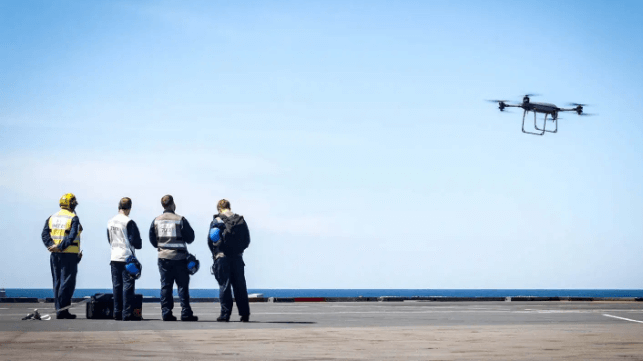Royal Navy Uses Drone Deliveries for STS Transfers for the First Time

The Royal Navy carrier HMS Prince of Wales has debuted the service's first operational use of cargo drones for ship to ship transfers while on deployment to the Indo-Pacific. Prince of Wales and her crew used a Malloy T-150 quadcopter drone to transfer goods from the carrier to the destroyer HMS Dauntless, eliminating the need to use a helicopter or small craft for small-package flights.
The drone flew a short one-mile transit from one ship to the other, and a crew aboard Dauntless guided it in for each landing. "This is a key milestone for the trial, achieved by all the hard work that everyone has put in. I’m proud to have achieved this first for the Royal Navy and excited to progress further over the duration of the deployment," said Lieutenant Matt Parfitt, 700X Pioneer Flight Commander.
The service has been experimenting with drone delivery services for a long time. Five years ago, the Royal Navy and Royal Marines began testing the Malloy T-150 for shoreside ammunition drops and combat supply deliveries during amphibious assault exercises, and also began work on testing the larger T-400 for bigger payloads. In 2023, a Royal Navy team trialed a much larger fixed-wing cargo drone for shore-to-carrier deliveries, the W Autonomous Systems HCMC, which has a payload of 100 kilos and a range of more than 850 nautical miles. The Malloy T-150 fills a sweet spot for small ship-to-ship transfers, and does not require a big deck for landing on each end of the trip.
"This milestone in the Malloy trials is a step toward the vision of a fully integrated hybrid carrier air wing. By taking some of the logistics burden, Malloy will allow our naval helicopters to concentrate on their core outputs," said Captain Colin McGannity, Commander Air Group, UK Carrier Strike Group. "The really exciting bit is that we then plan to incorporate these lessons to be able to use UAVs for many other roles, including options for warfighting."
